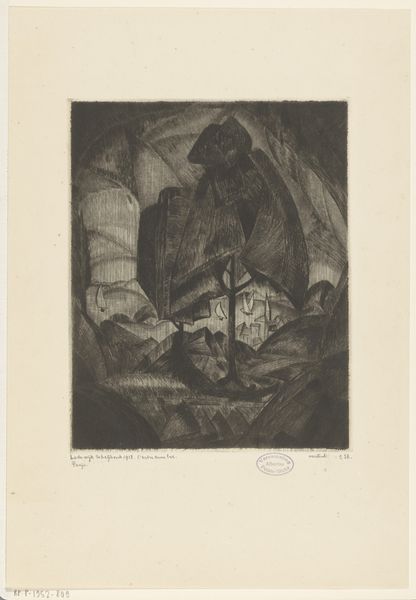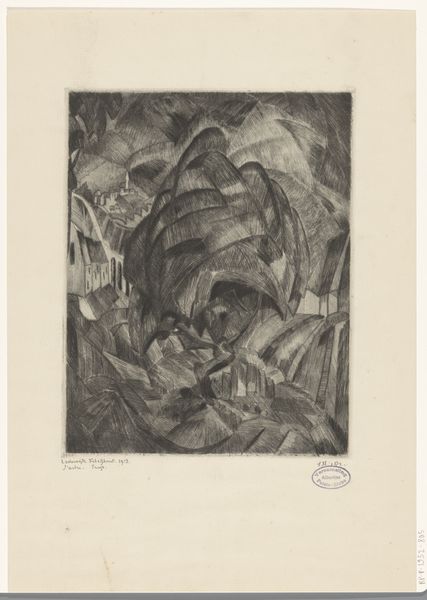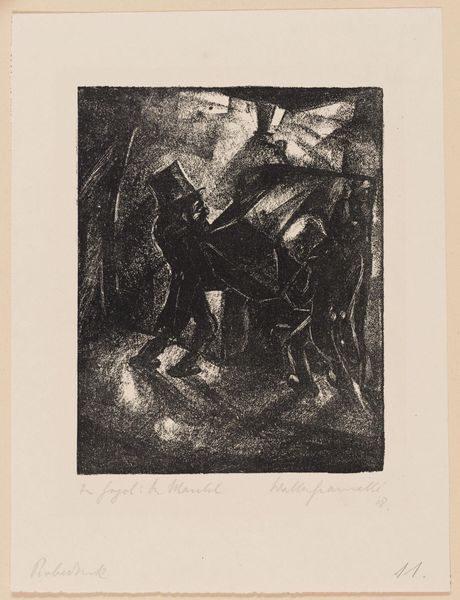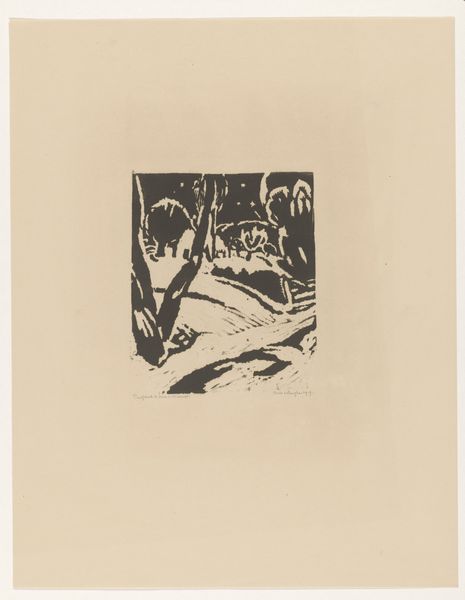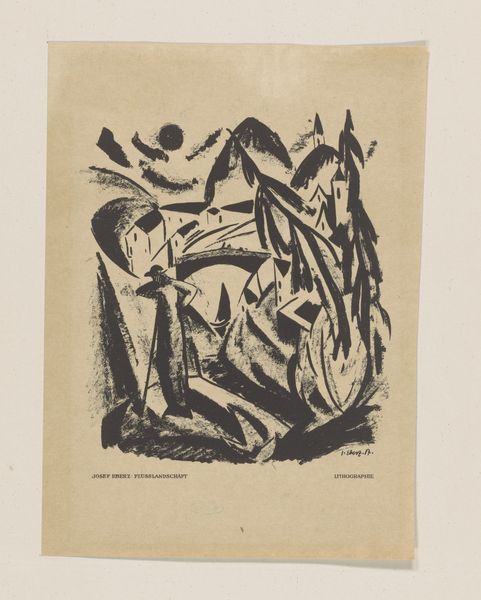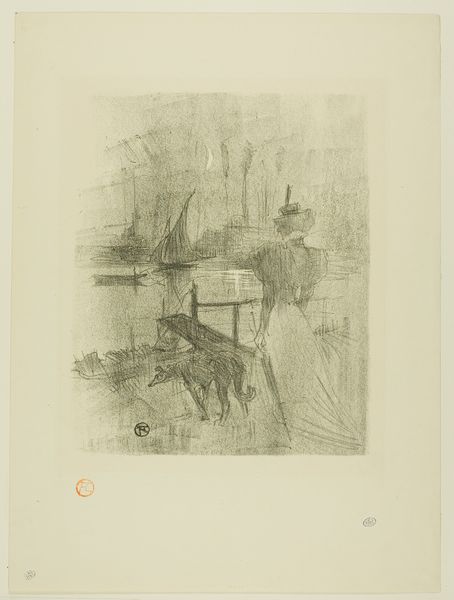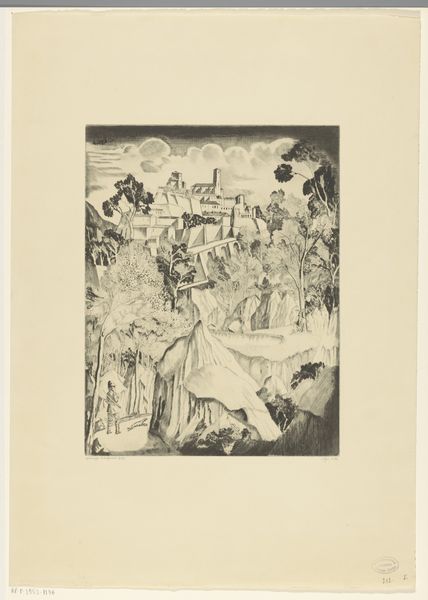
print, etching
# print
#
etching
#
landscape
#
geometric
#
line
Dimensions: height 247 mm, width 198 mm
Copyright: Rijks Museum: Open Domain
Curator: Here we have Lodewijk Schelfhout's "Tree in a Hilly Landscape with Lake," an etching created in 1913. It's currently held here at the Rijksmuseum. Editor: The first thing that strikes me is how geometric it is. The entire scene, from the hills to the titular tree, feels fragmented into sharp angles and planes. It’s almost Cubist in its reduction of forms. Curator: It's interesting you say that because Schelfhout was definitely engaging with the artistic currents of his time. While not strictly Cubist, this work reveals an interest in deconstructing and restructuring the landscape. The linear quality achieved by the etching technique adds to this sense of fragmentation. Look at the way he renders light and shadow, it gives a fractured reality effect. Editor: Exactly, it makes me think about the rapidly changing world during the early 20th century, that sense of unease and fractured reality permeating into art. Was this an expression of social commentary by Schelfhout? Curator: Perhaps. Landscape art has long been tied to ideas of national identity and social values. The fragmentation we see here might be read as a questioning of those established ideals. This print, while appearing simple in subject, resonates with the political and social shifts happening across Europe in that era. But beyond pure historical analysis, how do you think it makes you feel? Editor: A little disoriented, if I’m honest. The way he's rendered perspective creates a somewhat alienating effect. It’s like looking at a landscape through broken glass; it speaks to a world in disarray. It reminds me that landscapes are not merely passive backgrounds but carry layered meanings, shaped by the society observing it. Curator: That's a powerful interpretation. Schelfhout’s landscapes often walked the line between representation and abstraction and I can imagine viewers might not respond positively at the time. This particular artwork, and similar geometric landscapes, represents not only art and design that shapes public perception of land but ultimately land use policies themselves. Editor: This piece reminds us that even seemingly innocuous landscapes can reflect the tensions of a changing world and invite questioning and debate about power.
Comments
No comments
Be the first to comment and join the conversation on the ultimate creative platform.
